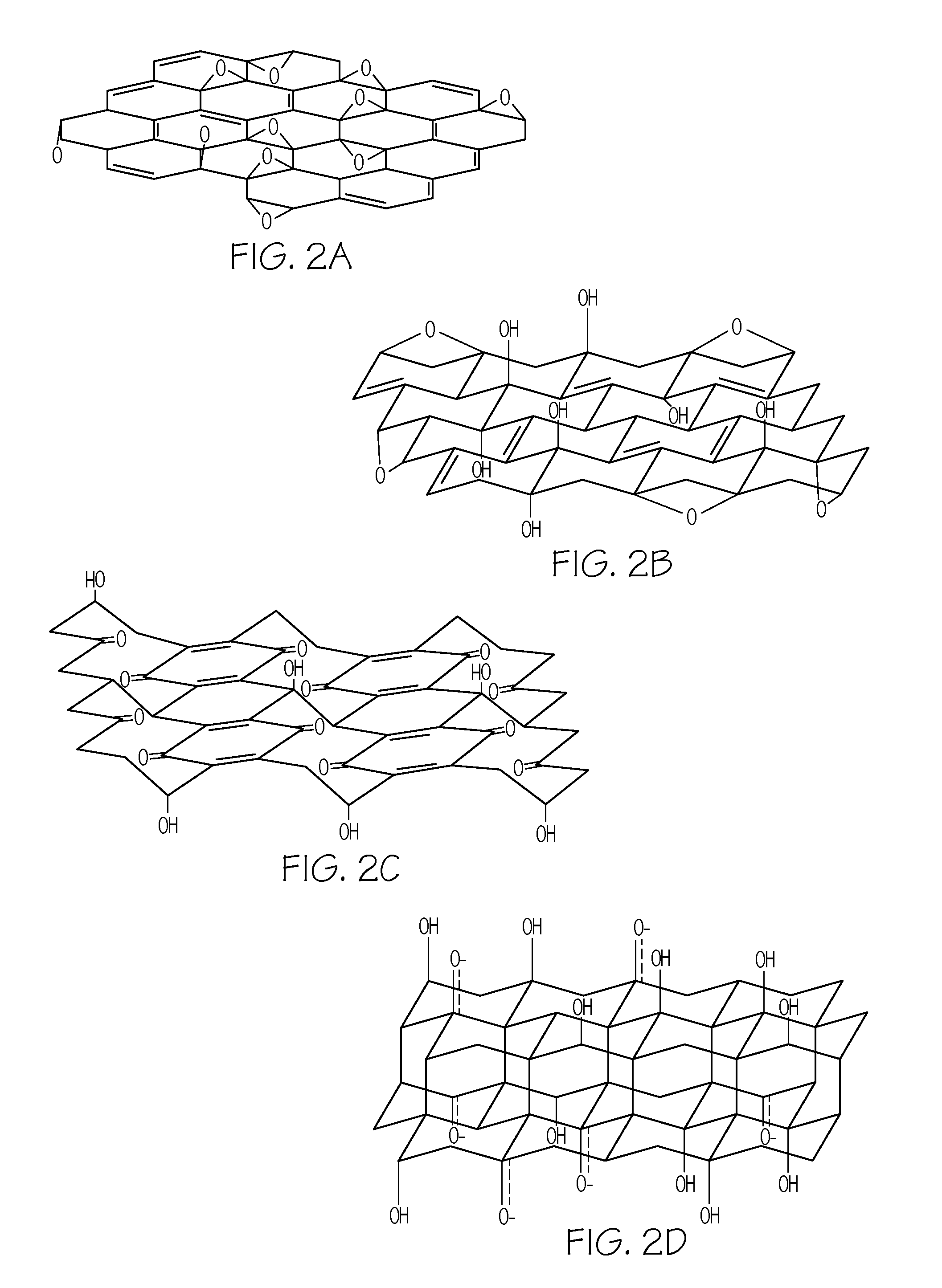Graphene oxide filters and methods of use
a technology of graphene oxide and filter, applied in the direction of membranes, separation processes, instruments, etc., can solve the problems of fuel pump failure, filter plugging, injector fouling, topcoat peeling,
- Summary
- Abstract
- Description
- Claims
- Application Information
AI Technical Summary
Benefits of technology
Problems solved by technology
Method used
Image
Examples
examples
[0040]The following examples are given to illustrate specific embodiments of the present invention and are in no way intended to limit the scope of the disclosure in this application.
Examples of GO Applications
[0041]Organic Solvent Sterilization and Purification Application.
[0042]The use of organic solvents in the pharmaceutical and biomedical industry, and in biochemistry, biology and biomolecular laboratories and hospitals is ubiquitous. For multiple applications, sterile solvents that are free of microorganisms are required. However, the sterilization of organic solvents is a difficult and cumbersome process relying on the use of small pore size filters (0.22 to 0.45 μm) that presents a barrier to solvent flow. Other sterilization procedures, such as autoclaving or UV irradiation, cannot be applied to solvents because their properties can deteriorate and may be hazardous to workers. GO media can be used to form columns, filters, coatings and films that can be used to sterilize or...
experimental examples
Example 1
GO Column Filter
[0053]A GO filter for the removal of microorganisms from jet fuel is described. Jet-A fuel samples were inoculated with bacteria and then subjected to filtration and characterized for filtration efficiency. Biomolecular approaches, including quantitative real-time PCR (qPCR), cell-based colony counting, scanning electron microscopy (SEM), and fluorescent microscopy, were applied to demonstrate the efficiency, functionality and mode of action of the GO filter.
[0054]GO was synthesized using a modified version of the Hummers method. Filter columns were developed by packing 32 mg and 260 mg of thin, flakes of GO in to 0.5 and 2.5 ml plastic syringe casings, respectively. The 32 and 260 mg GO columns were tested for their ability to remove Gram positive and Gram negative bacteria from 7 ml and 7,000 ml of jet fuel, respectively. To reduced variability in the tests and maintain constant flow rates the 260 mg GO columns were tested as part of an apparatus that allo...
example 2
Synthesis of Ag-GO
[0060]GO was synthesized using a modified Hummers method. Ag-GO was prepared using a sonochemical method as follows. 50 mg of GO, 25 mg of silver acetate, and 15 ml of DMF were mixed in a three arm sonochemical flask (Sonics Inc., Suslick flask). The mixture was sonicated at 37% amplitude and 20 KHz for 20 minutes using a pulsed (1 second on, 1 second off) procedure. After the sonication, the solution turned black and was stable for a few hours without any noticeable precipitation. In the process of recovering Ag-GO, the mixture was transferred to a round-bottom flask and DMF was removed using a rotary evaporator. The remaining solid material was transferred to a centrifuge tube where it was washed with DI water and ethanol five times, respectively. The ethanol was dried by blowing nitrogen across the surface of the solution and the final Ag-GO product was recovered as a black powder.
PUM
| Property | Measurement | Unit |
|---|---|---|
| Length | aaaaa | aaaaa |
| Length | aaaaa | aaaaa |
| Length | aaaaa | aaaaa |
Abstract
Description
Claims
Application Information
 Login to View More
Login to View More - R&D
- Intellectual Property
- Life Sciences
- Materials
- Tech Scout
- Unparalleled Data Quality
- Higher Quality Content
- 60% Fewer Hallucinations
Browse by: Latest US Patents, China's latest patents, Technical Efficacy Thesaurus, Application Domain, Technology Topic, Popular Technical Reports.
© 2025 PatSnap. All rights reserved.Legal|Privacy policy|Modern Slavery Act Transparency Statement|Sitemap|About US| Contact US: help@patsnap.com



